-
Lights out: Experts say instability of world’s power supplies must be urgently addressed
A new study reveals the urgent need to address instabilities in the supply of electrical power to counteract an increase in the frequency and severity of urban blackouts. The work builds on previous studies which examined a sharp increase in electrical usage over recent years, and warned the world to prepare for the prospect of coping without electricity as instances of complete power failure become increasingly common.
-
-
Major American cities manage water supply better
In an effort to address environmental factors, population growth, and technological factors, many American cities are taking steps to practice better water conservation efforts, after decades of largely ignoring steps that could be taken. These practices have brought average water use per person each day from fifty-five gallons to something closer at times to thirty to thirty-five gallons.
-
-
A major cyberattack causing widespread harm to national security is imminent: Experts

A new report found that more than 60 percent of the roughly 1,600 computer and Internet experts surveyed on the future of cyberattacks believe a nationwide cyberattack is imminent. They did so in response to the question: “By 2025, will a major cyberattack have caused widespread harm to a nation’s security and capacity to defend itself and its people?” The experts also warn about the risks to privacy which will accompany a growing focus on cybersecurity.
-
-
Coastal towns build resilience to prepare for future storms
Sea Bright, New Jersey is one of several communities affected by Superstorm Sandy which is actively building resiliency against the next major storm. The town, set on a narrow strip of sand between the Atlantic Ocean and the Shrewsbury River, frequently floods, and during Sandy, its entire downtown business district was damaged, as were 75 percent of the town’s homes.
-
-
Upgrading infrastructure could reduce future flood damage
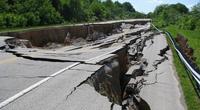
From 1980 to 2007, about 90 percent of all global disasters were caused by flooding either by rain, tsunami, hurricane, or some other natural event. At the same time, the American Society of Civil Engineer’s 2013 Report Card for America’s Infrastructure gave the country a dismal D+. The group said $3.6 trillion was needed by 2020 to address the most serious problems. In Colorado, the report card says, 70 percent of major roads are poor or mediocre and 566 bridges are structurally deficient. A new study argues that the severe flooding that devastated a wide swath of Colorado last year might have been less destructive if the bridges, roads, and other infrastructure had been upgraded or modernized.
-
-
Texas acts to reduce number of man-made earthquakes
The number of disposal wells in Texas has surged along with the number of drilling projects. Texas has more than 3,600 active commercial disposal wells. In 2013, the Railroad Commission approved 668 disposal well permits, twice the number of approvals in 2009. The growing number of disposal wells corresponds with an increase in earthquakes in communities where such seismic activity rarely existed.Officials in Texas have now taken steps to reduce the number of earthquakes caused by wells drilled for the disposal of oilfield waste.
-
-
Georgia Tech releases 2015 Emerging Cyber Threats Report
In its latest Emerging Cyber Threats Report, Georgia Tech warns about loss of privacy; abuse of trust between users and machines; attacks against the mobile ecosystem; rogue insiders; and the increasing involvement of cyberspace in nation-state conflicts.
-
-
Many victims of Hurricane Sandy are still waiting for government aid
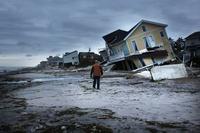
It has been two years since Hurricane Sandy destroyed thousands of homes and businesses along the Jersey Shore yet many affected homeowners are still waiting for federal and state aid to rebuild. Of the $3.26 billion the U.S. Department of Housing and Urban Development (HUD) has provided to New Jersey, only $802 million has been paid out as of 30 September. The federal government’s first allocation of Sandy funds to New Jersey came seven months after the storm. The state has yet to issue any of the $1.46 billion approved by HUD in May, and New Jersey officials expect a final round of $880 million next spring.
-
-
State regulators discuss the connection between fracking and earthquake
Regulators from states with significant petroleum and natural gas exploration activities met last week in Columbus, Ohio as part of the 2014 Interstate Oil and Gas Compact Commission conference.One key topic of discussion at the conference wasthe potential implications of a study which found that numerous, unnoticeable earthquakes in Harrison County, Ohio, likely were linked to oil and natural gas exploration. 190 of the quakes which ranged from magnitude 1.7 to 2.2, occurred in the thirty-nine hours after fracking activity occurred at one well in late September and early October 2013.
-
-
States invest in resilience in the face of mounting extreme-weather challenges
Months after Superstorm Sandy devastated the New York coast line, Governor Andrew Cuomo’s Office of Storm Recovery launched a $17 billion strategy to transform the state’s infrastructure. Project Reimagining New York for a New Reality sought to make the state’s transportation networks, energy supply, coastal protection efforts, weather warning systems, and emergency management more resilient. The strategy is just one example of a trend in investments toward resilience efforts post Hurricane Katrina, Irene, Lee, and Sandy.
-
-
Building a network of canals to save Boston from sea level rise
By the end of the century, sea-level rise on the U.S. east coast is predicted to reach six feet, so city planners in Boston recently met to discuss how to live with rising waters along the city’s historic streets. One suggestion is to turn Boston’s Back Bay district into a network of canals. The canals would alleviate sea-level rise by draining water into lower-lying back alleys and some main streets, but the proposed plan would have to contend with freezing temperatures in the winter.
-
-
Effective, inexpensive method to detect natural gas pipeline leaks
Major leaks from oil and gas pipelines have led to home evacuations, explosions, millions of dollars in lawsuit payouts, and valuable natural resources escaping into the air, ground and water. Scientists say they have developed a new software-based method that finds leaks even when they are small, which could help prevent serious incidents — and save money for customers and industry.
-
-
South Florida wants to secede from Florida over sea level rise
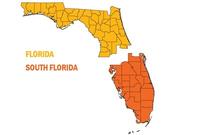
When people talk of “secession” in the United States they typically have Texas, Vermont, or the former Confederate states in mind, and the reasons for driving secession typically have to do with politics or money. Not anymore. The city of South Miami earlier this month passed a resolution which called for southern Florida to secede from the rest of the state, citing climate change as the reason. There are many differences between north and south Florida: South Florida is largely urban and politically tends to lean left, while the north is mostly rural and much more conservative. If south Florida reminds people of New York, the Florida panhandle resembles Alabama. Then there is this: The northern part of the state is, on average, 120 feet above sea level, but much of the southern section averages only fifteen feet above sea level. South Floridian say that the state government in Tallahassee ignores the perils of sea level rise, which are particularly acute in south Florida, so the time has come to separate from the aloof north.
-
-
China steals confidential data on the vulnerabilities of major U.S. dams
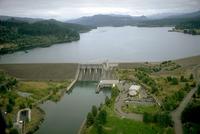
The U.S. Army Corps of Engineers’ National Inventory of Dams(NID) contains critical information on the vulnerabilities of the roughly 8,100 major dams in the United States. Between January and April 2013, U.S. intelligence agencies spotted several attempts by China’s People’s Liberation Army (PLA) cyber-espionage unit to access the NID database and steal its contents. On Monday, National Weather Service (NWS) hydrologist Xiafen “Sherry” Chen, 59 was arrested for allegedly breaching the NID security and stealing confidential data on U.S. dam vulnerabilities. The Justice Department has raised the alarm over multiple attempts by China to steal data on U.S. critical infrastructure through individuals with privileged access to confidential databases.
-
-
U.S. planning expansion of nuclear production in the face of safety concerns
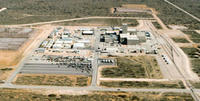
Despite the release of a damning report regarding the 14 February nuclear waste accident at the Waste Isolation Pilot Plant (WIPP) near Carlsbad, New Mexico by the U.S. Department of Energy (DOE), the government is planning ramped-up production of nuclear weapons cores, a move which is raising red flags for those calling for reform of nuclear production and storage procedures.
-
More headlines
The long view
Water Wars: A Historic Agreement Between Mexico and US Is Ramping Up Border Tension
As climate change drives rising temperatures and changes in rainfall, Mexico and the US are in the middle of a conflict over water, putting an additional strain on their relationship. Partly due to constant droughts, Mexico has struggled to maintain its water deliveries for much of the last 25 years, deliveries to which it is obligated by a 1944 water-sharing agreement between the two countries.
Trump Is Fast-Tracking New Coal Mines — Even When They Don’t Make Economic Sense
In Appalachian Tennessee, mines shut down and couldn’t pay their debts. Now a new one is opening under the guise of an “energy emergency.”
Smaller Nuclear Reactors Spark Renewed Interest in a Once-Shunned Energy Source
In the past two years, half the states have taken action to promote nuclear power, from creating nuclear task forces to integrating nuclear into long-term energy plans.
Keeping the Lights on with Nuclear Waste: Radiochemistry Transforms Nuclear Waste into Strategic Materials
How UNLV radiochemistry is pioneering the future of energy in the Southwest by salvaging strategic materials from nuclear dumps –and making it safe.
Model Predicts Long-Term Effects of Nuclear Waste on Underground Disposal Systems
The simulations matched results from an underground lab experiment in Switzerland, suggesting modeling could be used to validate the safety of nuclear disposal sites.
